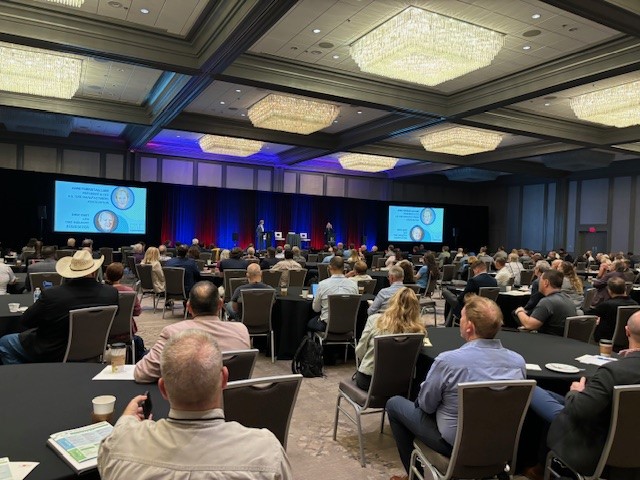Advancing Industrywide Recycling Technology
August 13, 2024
Reflections from the 2024 Tire Recycling Conference

From May 16-17, 2024, hundreds of tire industry stakeholders gathered in Atlanta for the Tire Recycling conference, where the newly formed Tire Recycling Foundation (TRF) was announced. The TRF is a joint initiative of USTMA and the Tire Industry Association that brings together the whole breadth of the tire industry to identify and promote economically viable tire recycling solutions. Over the two-day conference, industry leaders representing manufacturers, tire dealers, recyclers, automakers, regulators, and more shared knowledge, built connections, and pledged support to scientific endeavors on tire recycling and sustainable tire manufacturing. These efforts will preserve tires’ status as one of the world’s most recycled and reused products and advance solutions to improve performance and environmental impact.
Rubber-Modified Asphalt: Promoting Sustainability with End-of-life Tires
A primary focus of the conference was building support for scientific research expanding tire recycling options and sharing research findings with regulators and other stakeholders. One of the key initiatives the TRF will support is educating state regulators on innovative options for roadway pavement materials, including rubber-modified asphalt (RMA). RMA has seen massive improvements in its useability and cost-effectiveness over the past several decades, and it outperforms standard options on sustainability metrics. It extends pavement lifespan, enhances skid resistance and ride quality, and reduces traffic noise. RMA has demonstrated its cost-effectiveness by minimizing maintenance requirements and total lifecycle costs. Importantly, RMA is already a circular product, with materials continuously recycled and remade into new products. With recent federal infrastructure stimulus, more opportunities exist to expand the use of RMA in the U.S. than ever before.
So far, research, including a recent study from Washington State University, indicates promising results for RMA in reduction of tire abrasion. Since RMA pavements are stiffer and smoother, they reduce tire abrasion and decrease CO2 emissions through lower energy consumption over the lifetime of a pavement. The industry continues to sponsor additional research in this area to address knowledge gaps, to better understand long-term benefits, performance, and environmental impacts, and to advance tire circularity.
The conference also helped industry representatives share new ideas with each other for expanding sustainability efforts, including ensuring greater recycling of end-of-life tires. Working with tire recyclers, universities, sustainability experts and the paving industry, the TRF applied for a U.S. Environmental Protection Agency grant under the Low Embodied Carbon Construction Materials Program to support the foundation’s research and sustainability efforts. More news on this grant and how it could help advance tire recycling and TRF’s mission will be shared soon. Sign up here to stay updated.
Progressing Toward Circularity
Another prominent topic at the conference was building a circular market for tires. This was further emphasized in a fireside chat featuring Bridgestone President and CEO Paolo Ferrari, Michelin North America President and Chairman Alexis Garcin and moderated by Anne Forristall Luke, USTMA President and CEO. The conversation focused on the need to involve the whole tire supply chain to increase the recyclability of tire components – no one company can achieve this goal alone. Ideally, the industry can achieve true circularity where old tires can be broken down and turned back into new tires ready for consumer use.
Pyrolysis will play a key role in progressing toward this goal. This industrial recycling method offers pathways to closed-loop production for several key tire materials. For instance, pyrolysis is already being used to generate “reclaimed carbon black” by separating solid carbon char from recycled tires. This char undergoes further processing into reclaimed carbon black and is used in new tires. Pyrolysis is also being used to generate reclaimed tire oil. With proper scaling and support from organizations like the TRF, the industry can work toward pyrolyzing many more recycled tires, creating a new source of recycled raw materials for tire manufacturing.
As tire sustainability becomes a more prominent topic, efforts to boost circularity and improve recycling outcomes have never been more important. The 2024 Tire Recycling Conference helped focus the industry’s efforts, delivering crucial support for the TRF and setting the stage for further progress. Visit https://tirerecyclingfoundation.org/ to learn more about TRF and its initiatives.
